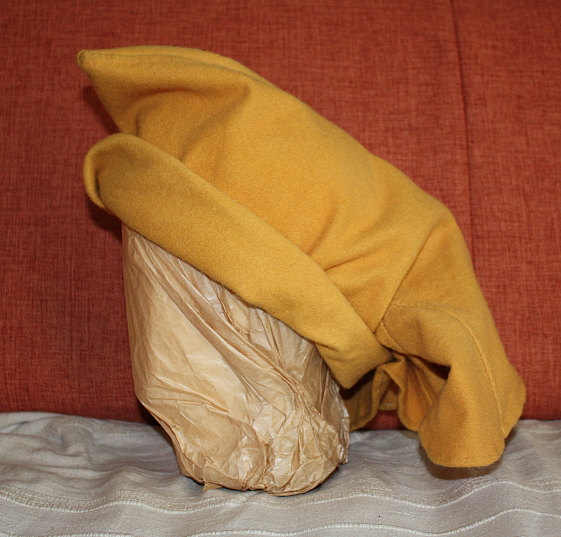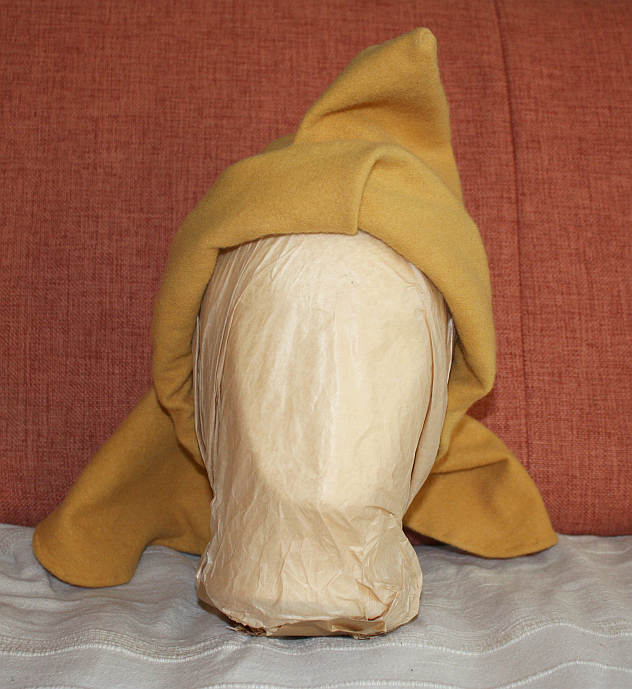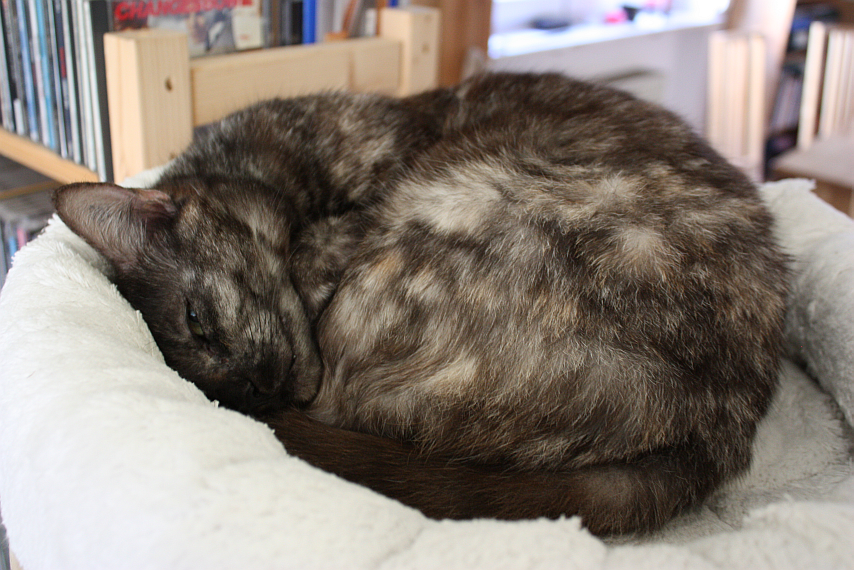Search the Blog
Latest Comments
Harma
Blog Break .
29. April 2024
Isn't the selvedge something to worry about in a later stage? It seems to me a lot more important th...
Beatrix
Experiment!
23. April 2024
The video doesn´t work (at least for me). If I click on "activate" or the play-button it just disapp...
Katrin
Spinning Speed Ponderings, Part I.
15. April 2024
As far as I know, some fabrics do get washed before they are sold, and some might not be. But I can'...
Kareina
Spinning Speed Ponderings, Part I.
15. April 2024
I have seen you say few times that "no textile ever is finished before it's been wet and dried again...
Katrin
How on earth did they do it?
27. März 2024
Ah, that's good to know! I might have a look around just out of curiosity.
I've since learned that w...
More from the hood.
Here are, as promised, the other photos from the finished hood. It's placed with the head opening on my demo head - a popular way of wearing hoods in the late middle ages.
The wool is a lightly fulled tabby, dyed with weld (reseda luteola) and a tiny smidgeon of madder (rubia tinctoria). The seams are running stitches, and the seam allowance is folded to one side and secured/neatened with hem stitches, in some places folded apart and secured to both sides of the seam, also with hem stitches.
The cut is oriented on the hoods found in Herjolfsnaes and London, with a shorter "cape" part than, for instance, the Bocksten find hood.
And also: Gratuitous cat pic.






